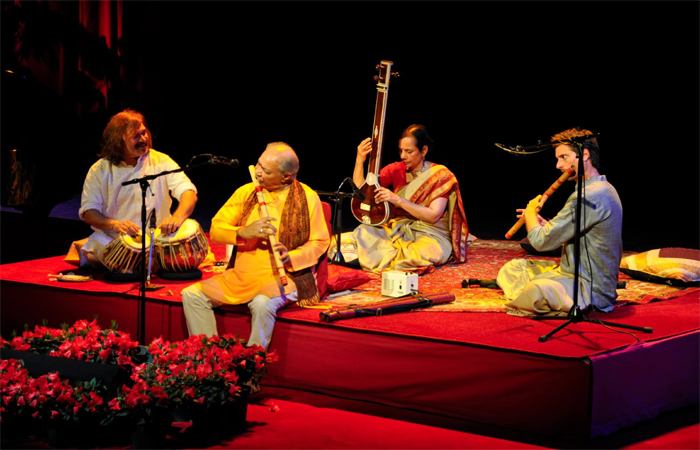An interesting anecdote –
The Hindustani vocalist Omkarnath Thakur (1887–1968) received an invitation to dine with Mussolini as he was nearing the end of his visit to Italy in May 1933. Il Duce had caught wind of Thakur’s theories and experiments regarding the inducement of emotional states by rāga performances, and he wanted a demonstration.

After a specially prepared vegetarian dinner, Thakur began with Rāga Mālkauns, which depicts valor. “When I was soaring in the high notes of the rāga,” he later recalled, “Mussolini suddenly said ‘Stop!’ I opened my eyes and found that he was sweating heavily. His face was pink and his eyes looked like burning coals. A few minutes later his visage gained normalcy and he said ‘A good experiment.’”
After Thakur brought him to tears with Rāga Chhāyānat, which is meant to depict pathos. Mussolini said, after taking some time to recover, “Very valuable and enlightening demonstration about the power of Indian music.”
“I could not sleep at all the entire night,” the vocalist recalled, “wondering whether the meeting had really taken place; I thought it was a part of a dream.” The next day, two letters from Mussolini arrived—one thanking him and one appointing him as director of a newly formed university department to study the effect of music on the mind (an appointment that he was unable to accept).
The story tells us about the emotive and sonic powers of Indian Classical Music. The therapeutic application of music across the cultures and traditions of the world has been a subject of study for years. Sound Healing, as an art and science has caught the attention of many around the world. Experiments are on, theories being proposed and established around it and a whole lot of activity going on everywhere.
Notes of Indian Music and our Body –
There’s a natural analogy between sounds and how life is constituted. One of the similarities comes from the diatonic music scale structured by 7 notes just as our physical body has 7 main glands and 7 Chakras. Because of this each one of the notes of the scale are commonly associated to each one of the Chakras; for example, the C note corresponds to the Mulādhāra or First Chakra, the D to the second one and so on.
Difference between Indian and Western music is that the fundamental frequency or ‘note’ called Sa (which means home) in Indian notation instead of Do or C- is not static but variable in every person because every individual has a unique vibration as well as every musical composition transmits unique feelings and consequently, Sa is also adapted to the impression that the artist wants to transmit. This principle is also applied in sound healing by specialists as the customized music composed for every patient can be adjusted to his main frequency and the illness he could be dealing with. Through this kind of professional application of music therapy as complementary resource, a lot of improvements can be achieved in the healing process of several health issues such as, Alzheimer’s, dementia, clinical depression, autism, injuries and cancer.

Does it really Heal?
Yes, there are tremendous examples why it wouldn’t. If you are up and about it and open to the idea of listening to Indian classical music as a healing and soothing sonic experience, it surely will transport you into realms of therapeutic and regaling experiences. The best healing experience through sound could be if you yourself are producing it. This science is called Nāda Yoga – the yoga of sound. The body produces vocal sounds on specific vowels and consonants for specific results. It is being widely studied and practiced all around the world, more than ever. Interested students are diving deep into the powers of sound under the tutelage of renowned Nāda Yoga masters. The Yoga studios and institutes all around the world have come to accept the therapeutic powers of sound and are constantly engaging Sound Healers and Indian Classical Musicians to enhance the healing experience of the mind, body and Soul.

Sudhanshu Sharma, from MusicPlus Retreats is doing a great job in bringing out the therapeutic powers of Indian Classical music to the forefront and is a respected teacher of Nāda Yoga and sacred music all around the world. His retreats aim to make the full use of a secluded space away from the maddening sounds of the cities and indulge in a deep practice of Rāgas and Mantra music – the ultimate sound therapy.

